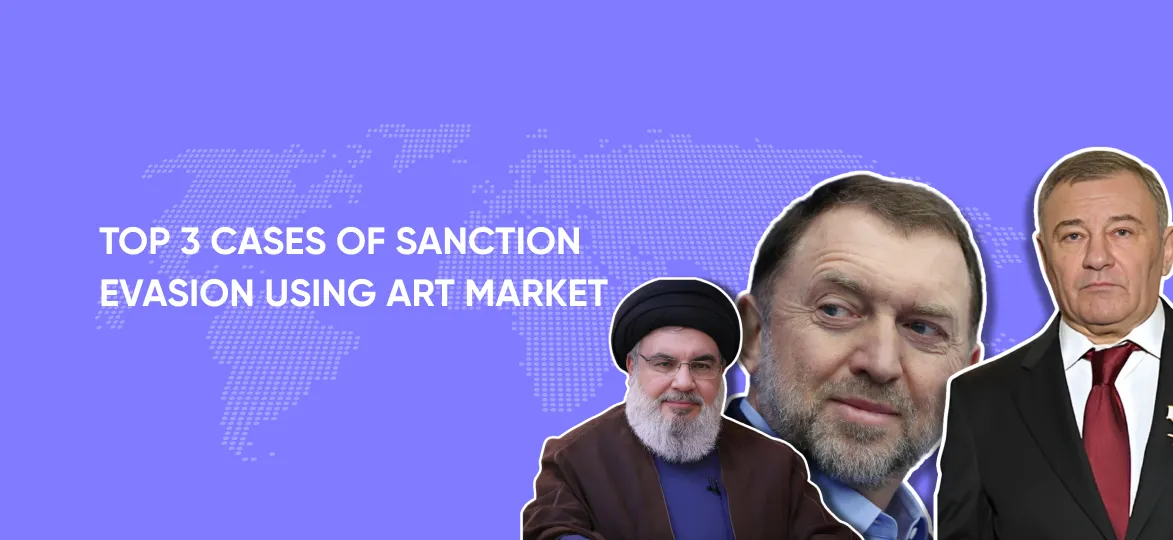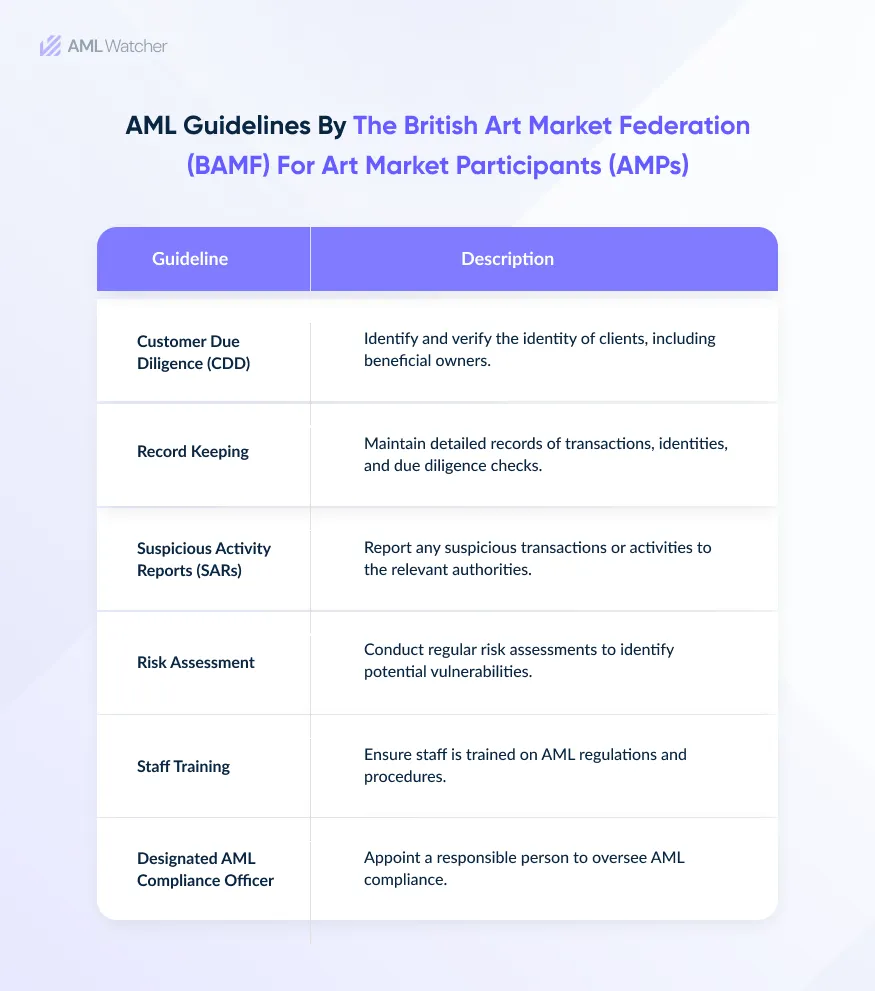
Top 3 Cases Of Sanction Evasion Using Art Market
The art of sanctions evasion and hiding illicit finances behind the tinted facade of the art market is convincing U.S. regulatory authorities to hit the industry with anti-money laundering (AML) and countering the financing of terrorism (CFT) laws.
The art world, particularly the American market worth $30 billion, when left unregulated for AML/CFT regulations becomes the haven for art money laundering.
Sneaky public policies with no targeted financial regulations in the art market serve evaders to move their dirty money across borders and even finance anti-peace activities.
Despite the art market being a black hole for enforcement watchdogs and unearthing scandals of holy racketeering, guess what did not stop howling at global businesses? Ever-increasing sanctions! Yes, that is right.
The Russia-Ukraine conflict has given birth to endless financial sanctions limiting individuals from accessing their assets on the soil of America, hence the exploitation of financial systems through art markets, shell companies, and real estate in compromised AML-regulated markets.
Not later than Feb 2024, when the efforts of corrupting Russia’s war machine resulted in new 500 sanctions by our very President Joe Biden a day before Ukraine’s invasion anniversary was observed.
While pondering on the long-lasting impacts of geo-political war driving financial actors crazy, the need of the hour is to build AML compliance walls high enough to stay protected from sanction evaders and regulatory watchdogs’ wrath.
History has witnessed several scandals of sanction evasion in the art market exposing sophisticated money laundering schemes plotted by sanctioned entities right under the nose of watchdogs.
This blog entails primary nuances of white-collar crimes in art markets while focusing on the top three cases of sanctions evasion.
Before digging into the past, let’s explore the limited recognition of anti-money laundering regulations in the art market forcing AML watchdogs to craft a solid AML framework to address the escalating risks.
Slippery Slope of Regulations in the Art Market
Where there is a persistent need for improved and clear AML guidelines for businesses dealing in arts and crafts, it’s crucial to know existing guidelines that might appear vague when applied in today’s compliance landscape. Together we will explore these guidelines in different jurisdictions.
United States (US)
It might appear shocking to you but there are literally no finalized and clear AML regulations for the art market in the United States.
However, the accelerating scale of sanction evasion through art markets is gaining lawmakers’ attention.
Let’s see how it goes until then businesses are miraculously supposed to not engage in business with sanctioned entities.
Whether it is digestible or gives businesses diarrhea, businesses are obliged to shape their compliance in alignment with AML Laws in the US. Do it now or regret it later.
European Union (EU)
Creating no exemption for the art market, the European Union enacted the 5th Anti-Money Laundering Directive (5AMLD) to address money laundering and associated financial crimes in the AML framework.
Introduced in 2018, the 5AMLD addresses businesses to follow robust customer due diligence to monitor and suspect potential illegal activities in the art market.
United Kingdom (UK)
Observing the increasing AML threats in art markets, the United Kingdom brought amendments to its Money Laundering, Terrorist Financing, and Transfer of Funds (Information on the Payer) Regulations 2017.
Following the 5AMLD, the UK transformed existing AML guidelines in 2020 expecting AMPs (Art Market Participants) to be members of HM Revenue and Customs (HMRC).
Who are AMPs?
Aret Market Participants include Art Galleries, Auction Houses, Art Dealers, and Freeports. Falling under the category, AMPs are required to perform AML/KYC (Know Your Customer) and effective risk assessment of AML threats.
The regulatory maze of AML compliance might appear rocky at times but a comprehensive guide on AML Regulations in the UK covers major compliance gaps.
Complementing the existing AML guidelines in the art market, the British Art Market Federation (BAMF) empowers AMPs to meet AML requirements with a strategic map of AML case management.
Let’s get to the famous scandals of the U.S. sanction evasion in art markets that awakened the need for efficient due diligence in the industry if the ultimate objective is to stabilize the global economy and protect territorial peace.
3 Cases of Sanction Evasion in the Art Market
Sanctions are imposed to cease terrorist activities compromising national peace and security. The below cases show how these organized groups invade sanctions through sophisticated yet shady business methods making the art market a wild and dark alley for enforcement bodies.
Hezbollah Sanction Evasion – Disguise of Diamonds
Mastering the art of deception, a Lebanese nationality holder, Nazem Ahmad, who had links to Hezbollah terrorist groups with his financial empire was beyond the reach of financial intelligence units.
The United States Government had blacklisted him for concerning terrorism funding. Art and diamond trafficking seemed innocuous but it was his choice of weaponry.
Through an intricate web of shadowy allies and dummy companies, he managed to siphon millions of dollars ($1.2 million) through the American financial system. Fine pieces were bought from US galleries at inflated prices that would not reveal their true owners.
On the other hand, gemstones were sent for grading in the US where their prices were set high artificially to make more money.
Thus every transaction became a choreography whose principal aim was to obscure the involvement of Ahmad as well as evade being caught by law enforcement officers.
Ultimately, this deceitful network fell apart. The scheme unraveled when investigators followed money trails and shipment records.
One significant moment came following the arrest of one of Ahmad’s associates in the UK which completely exposed this entire enterprise.
The mounting evidence prompted charges from the US government against Ahmed as well as his partners in crime on various financial offenses like evading sanctions, money laundering, and cheating customs duties amongst others.
The Rotenbergs’ Tale of Abusing U.S. Art World
In 2014, the Obama-led US administration imposed sanctions on Arkady and Boris Rotenberg after they annexed Crimea. Even so, they managed to circumvent these restrictions using a complicated art-buying method.
The Rotenbergs used an American art consultant and a string of dummy corporations to buy top-of-the-range artwork worth millions of dollars such as that of Chagall and Braque.
This occurred almost immediately after sanctions were put in place; an indication of their wish to find a way around them.
The Panama Papers gave vital evidence tying the Rotenbergs to shell companies behind art purchases.
The unholy secrets of the leak showed how these shell companies were created in the heart of British overseas, the British Virgin Islands, and facilitated Rotenbergs through expensive art purchases.
Unfold the tales of deception. The biggest leak of the century, the Panama Paper Leak exposed how individuals holding power exploited gaps in global financial systems.
Russian Oligarchs and the Art of Sanction Evasion
The persistent Russia-Ukraine conflict has highlighted how the art market can be used as an avenue by Russian oligarchs to evade sanctions and launder their banned money. However, even as crackdowns on Kremlin-related wealth are pledged, there are still concerns that some loopholes might enable such people to continue in their dirty business.
This obfuscation is compounded by the difficulty of tracking ownership of valuable artworks due to the inexorable globalization of the art market and the increasing digitization of transactions. The opaque nature and rapidly growing investment value of art make it an ideal environment for cleaning illicit funds.
Whereas fine arts auction giants like Sotheby’s and Christie’s have tightened their belts to conform to anti-laundering laws, smaller galleries as well as collectibles such as stamps, wine, and NFTs are not secure.
Moreover, current rules on “art” in place do not sufficiently cover all forms of artwork making them amenable for exploitation purposes.
The situation is made worse by a lack of strong international collaboration in fighting against financial crime.
The ease at which assets can be moved across borders coupled with relaxed regulations in some jurisdictions means that oligarchs can move their wealth easily while hiding its origins.
How Can the Art Market Find A Safe Exit?
The world of art, at one time a place of refuge for beauty and creativity, has unwittingly become complicit in financial impropriety.
Consider the case of money laundering and sanction evasion, as well as the subjugation that the art market has experienced from those who want to profit undercover.
The only way to restore its integrity is through a radical change. How it can be achieved? Improved transparency is a major part of this change.
Stricter due diligence protocols by employing sanction screening and efficient AML risk management.
Another vital aspect of making the art market more secure is international cooperation. If regulations are harmonized across different jurisdictions, it will make it difficult for criminals to exploit legal loopholes available to them.
In addition to this, sharing intelligence and data among law enforcement agencies would go a long way in disrupting these illicit networks.
In conclusion, the public trust restored in the market for fine arts determines its reputation. The industry can regain its position as both a cultural and economic asset rather than retaining itself as a sanctuary for illegal acts if it makes ethics, transparency, and accountability primary concerns.
AML Watcher strives to raise financial vulnerability awareness and become the leading compliance partner in terrible times of escalating regulatory and criminal war.
Get in touch with our compliance geeks to smartly manage AML risks.
Book Free DemoWe are here to consult you
Switch to AML Watcher today and reduce your current AML cost by 50% - no questions asked.
- Find right product and pricing for your business
- Get your current solution provider audit & minimise your changeover risk
- Gain expert insights with quick response time to your queries




